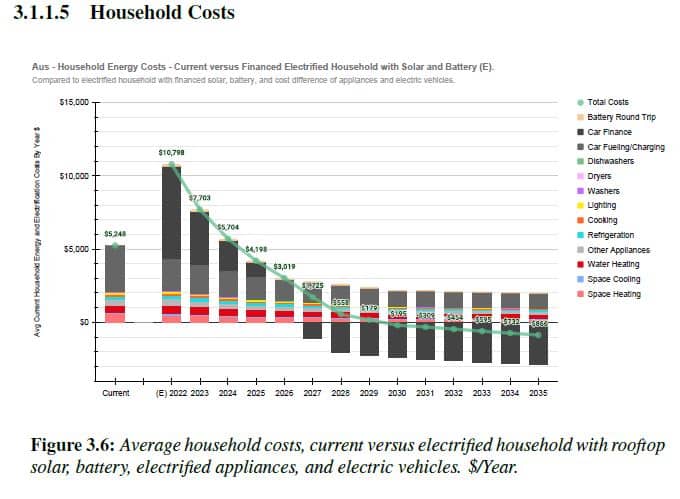Government intervention to facilitate the renewables roll-out has recently made headlines. The Albanese and Andrews-led governments and NSW Treasurer Matt Kean all recently announced multi-billion-dollar investments in upgrading the grid.
Last year’s “Castles and Cars” study – led by genius Australian inventor-engineer, Saul Griffith – breaks down why this is such a clear win for this country.
Australia produces very little of the oil we consume. And while we do produce gas, distribution costs are much higher than in Europe, East Asia or the northeastern United States, where population density is greater.
“Australians can be saving money (and making money) sooner in this energy transition relative to other economies that either have lower-cost incumbents (like the US), higher-population densities (like Asia), or less optimal renewables (like western and northern Europe),” say the study’s authors. “This is what makes Australia truly the luckiest country in the global race to transition to zero–carbon economies.”
What does this mean for households? The average Australian household uses 85kWh of energy per day. Diesel/petrol combustion accounts approximately 68%, with household gas making up another 15%.
Fully financing the electrification of “the average household” – that is, maintaining loans to buy an electric car, rooftop solar, electric water heating and any other necessary electric appliances – requires a first-year outlay of $5,550 over and above the average household’s current annual energy costs of $5,248. By Year 3, the total outlay peaks at $8,461.
The household breaks even in Year 7 and has saved $3,040 by the end of that year. It then continues to save $5,000-$6,000 per year.

If it were possible for all households to do this now, simultaneously, we as a nation would be spending $40bn less on energy annually by 2030.
The caveats: keep in mind that calculations are for “the average Australian household”, which currently owns 1.8 vehicles. Your mileage will vary.
Electric vehicle costs are based on financing relative to financing a non-electric vehicle. In other words, the initial costs listed above would be relatively steeper for a household that already owns a non-electric vehicle (or vehicles) outright.
Using data from Bloomberg, electric vehicles are currently 170% more expensive than non-electric vehicles. They are projected to reach price parity in 2026 and be 80% the cost of a combustion engine car by 2030.
Solar calculations are based on houses that are able to install a large system (i.e. 6-10kW). Financing costs are based on the warranty term of items: 7 years for electric vehicles, 10 years for water heaters and 25 years for rooftop solar.
Applied to the US, Griffith’s full-length study on the subject, Electrify, is available via MIT Press.
Follow Christian on Twitter for more news updates.
Sign Up To Our Free Newsletter